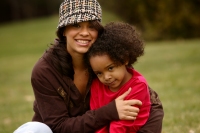|
Family Therapy
Family members can press our buttons like no one else. They bring out our strongest emotions, which can make communication even more difficult than it already is. Respect for each person and understanding of each other are key principles to healthy, productive family interactions. But they are not always easy to achieve. Family therapy provides a place to learn how to be a more healthy and harmonious family.

Family therapy includes your nuclear family, as well as work with your family of origin. Family therapy allows you to heal relationships, improve communication and reach out to troubled children. For children age 10 and younger, I use play therapy because children express themselves and learn best through play. Whatever the issue is, a teenager acting out, conflict between generations, depression, substance abuse, anxiety, trauma, parenting issues, abuse, school troubles, etc., the focus in family therapy is on understanding each person’s part of the story and finding solutions that work for everyone. (For more, please see My Approach to Therapy.)
Some of the areas covered in family therapy include:
- ADD / ADHD
- Balancing Roles as Worker, Parent and Spouse
- Bridging Generation Gaps
- “Bringing Home Baby” – i.e. how to adjust to having a child (based on the work by Dr. John Gottman, see www.gottman.com/parenting/baby)
- Building Better Family Relationships
- Children / Adolescents w/ Difficulties
- Coping with Aging Parents or Chronically Ill Partners
- Communication Skills
- Conflict De-escalation
- Discipline & Structure for Children
- Eating Disorders
- Failure of Child to Launch Out of the Home
- Grief / Loss
- Making Blended Families Work (i.e. step families or other family groupings - see below for more)
- Parenting Techniques
- School Problems
- Sibling Relationships
- Substance Abuse
- Transitions, (i.e., job changes, moving, new child born, children leaving home, etc.)
Stepfamilies (aka Blended Families)
Finding balance and harmony in a stepfamily is especially challenging. What role does a stepmother or stepfather take with the stepchildren? How do you create a good relationship between the stepparent and stepchild? How are the children coping – do they feel pulled in different directions? How does the other parent cope with a new step-mom or step-dad coming into the picture?
There are ways to make stepfamilies work better together, and they aren’t necessarily intuitive. Stepfamilies usually do not function in the same way as biological families. One important factor in defining the role of the step-parent is the ages of the children involved – appropriate family roles and relationships differ depending on how old the step-children are.
Together we can develop the keys to making it work -- building strong, healthy relationships and setting appropriate boundaries. As we progress, we may hold sessions for the whole family or for certain subgroups, as needed. Creating a healthy, happy stepfamily unit is not easy, but it can be done.
|